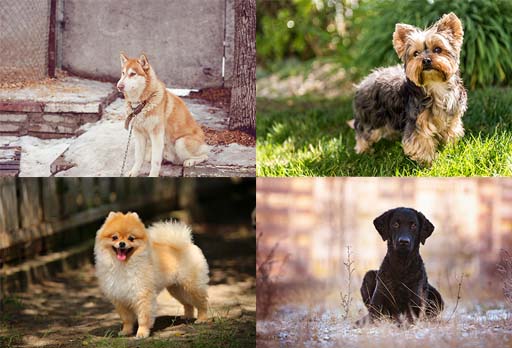Week 5: Adjectives: adding more information
Introduction
You’re now well on your way to working steadily through the main word classes. So far you’ve looked at nouns and verbs. You could get some way with communicating if a language only had nouns and verbs, but in order to communicate effectively, we need something more. For example, consider each of the pictures above. All of them are pictures of a dog.
If you were talking on the telephone to someone else who had copies of these four photos, how could you identify each one to them? Assuming you’re not both experts on dog breeds, one way would be to use the words in bold:
- The black one
- The small one with curly hair
- The perky one with fluffy fur
- The patient one with pointy ears and a short white and tan coat
The emboldened words are adjectives and this week you’ll look more closely at this very useful class of words.
By the end of this week, you should be able to:
- define and identify adjectives in simple sentences
- explain how nouns and adjectives work together
- write your own short text using adjectives creatively.

